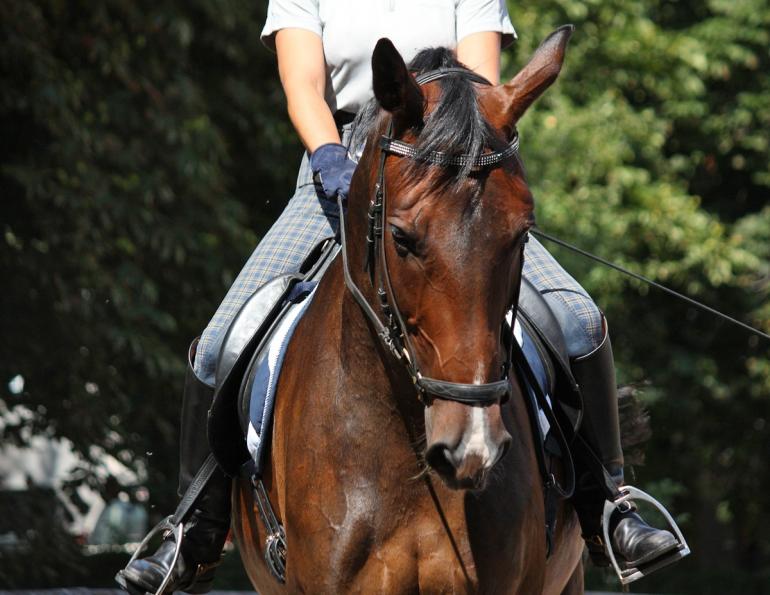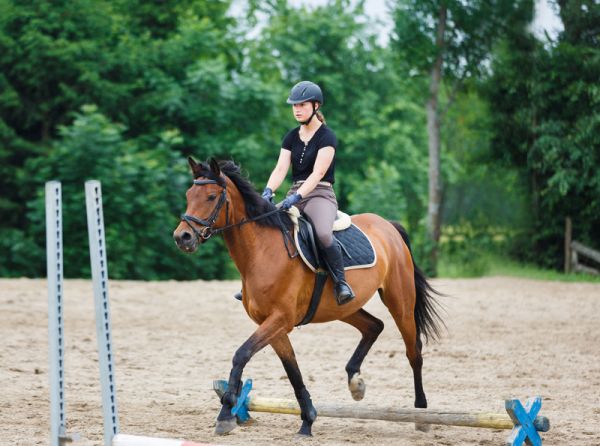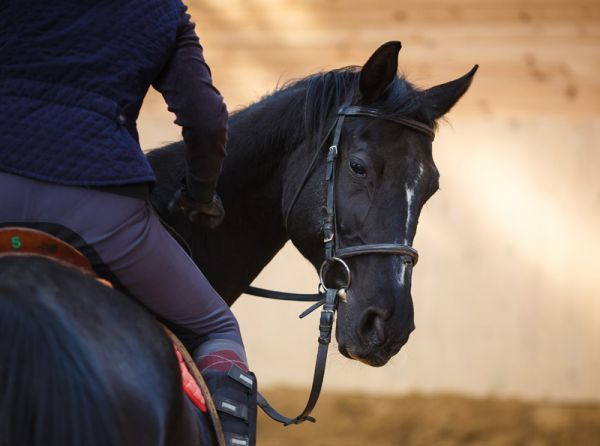By Jec A. Ballou
Many of us make our horses stiffer with our attempts at kindness. Aiming for light and forgiving rein contact, we sometimes make the mistake of too much looseness, which feels erratic and unclear to the horse. Rather than improving our horse’s balance and physiology, we cause him to fall apart immediately following moments of correct movement. Whether or not to interject releases of pressure with the contact is not the question; the question is when and how to do this.
Like many of my students, I want my horse to know when he has done something good. This includes when he has organized his body and stretched through his neck to make a soft contact with the reins. To praise him, I want to make a little release feeling in the reins. I see riders all the time with the same idea, except they often push their arms all the way forward, putting loops in the reins right when the horse has established a connection between himself and the rider. Possibly, this technique is even taught in some disciplines.
While the intention is good, the action is not.
Big variations in rein pressure disrupt the horse’s extensor muscle chain that channels propulsion from his hindquarters. Rather than easing in to the positive tonicity of maintaining a flexed poll and arched topline, he feels the rider abandon the postural framework. His nose pokes out, his back sags, and he loses balance. His rider then regains a light tension on the reins in order to re-establish his correct posture, and the whole cycle starts again.
Neither the horse nor the rider becomes steadier in this scenario. With the contact always coming and going, the horse’s back stiffens and his tongue muscles tighten. He relies on his forehand for equilibrium. The rider, meanwhile, develops a habit of pushing her elbows forward, collapsing her chest.
Am I advocating that riders should not offer a release of some sort? No. Riders absolutely should offer a lightening when the contact becomes nice. The trick — and the big challenge for us kind riders — is to give this release with a small movement of our fingers. With our hands and fingers we can offer the horse a lot; we do not need to push loops in the reins. An instructor once described this to me as “letting the steam” out of the contact. By opening your fingers to a loose fist when the horse is moving correctly, you can create a lightening while maintaining the same rein length and bit position in the horse’s mouth. This consistency leads to steady recruitment of muscle chains that hold the body in good alignment. Avoiding big variations in rein length and tension prevents these muscular impulses from becoming erratic, or from being recruited without the continuity needed to increase strength and elasticity.
Studies of equine anatomy have shown how constructive it is for a horse to travel while “on the bit.” They also show what a positive training tool the bit can be for the horse’s muscular development when used with good intention. The bit and rein contact as a whole allow us to trigger positive neuromuscular reflexes throughout the entire horse by generating engagement and looseness that both begin and culminate in the horse’s head and neck.
In summary: Yes, we do want feather-light contact with the bit. Remember, though, that lightness is trusting and steady, not intermittent and sloppy.


























